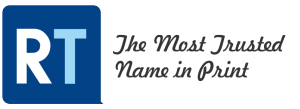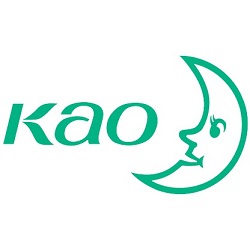Global Digital Printing Forecast

Global Digital Printing Forecast
John Shane, Director, Infotrends

While device installations are critical, they do not show the whole picture. There are great differences between devices in terms of actual usage. While consumer inkjet devices are over half of the total installed base, they represent only a tiny fraction of all pages printed. Figure 2 shows a very different picture of the global digital printing market. The clear growth area for global printing is page-wide inkjet. Page-wide inkjet devices fall into two very different classes. First, there are the office class devices best represented by the HP OfficeJet ProX style machines. These devices boast print speeds up to 70 ppm in draft mode and around 40 ppm for normal quality printing. For office class page-wide inkjet, most compete against laser devices in the 31-44 ppm range. Second, page-wide inkjet is also rapidly growing in the production market—particularly configured as roll-fed devices. They exhibit media flexibility, speed, and print quality with low consumable costs that make them attractive for printing high volumes for commercial applications, including book printing and brochures.
In Figure 2, while the print volume from page-wide inkjet is not separated for office vs. production printing, over 80% of the page-wide print volume is actually from these production class presses. On the other hand, total printing from electrophotographic devices, represented according to their speed range group, has just about flattened and is poised for a slow global decline.

Figure 3 shows global digital printing based on whether the device is in a home/office setting, or whether it is in a production setting. While the large majority of total print volume is from home/office class devices, total prints are flat to declining. In fact, 2016 is expected to be the peak year for home and office printing with a slow decline thereafter. On the other hand, production printing is expected to continue to grow, especially fueled by roll-fed page-wide inkjet. That technology is expected to continue to open new applications to digital printing and to continue to attract existing types of commercial print away from older print technologies such as offset printing to digital.

Installed base and print volume issues aside, what ultimately matters to vendors manufacturing or selling supplies for digital printing devices is the value of those supplies. Figure 5 shows InfoTrends’ estimate for total value of ink, toner, photoreceptors, as well as various ink and toner cartridges used in digital printing devices at final point of sale. Whether the supplies are sold in the transactional model (whereby the customer buys the supplies outright) or whether the value of the supplies are included in a click-contract or a managed print services (MPS) program, the value attributed to those supplies are shown below.
Once again, the global market is slowly declining. Nevertheless, the main cause of the decline comes from consumer inkjet. If consumer inkjet was removed, the market will still show extremely slow growth until 2019, when InfoTrends expects the sum of supplies value from the other device classes will also see a small decline. Also in the chart below, it is clear that InfoTrends expects that the sum of serial business inkjet and page-wide inkjet will grow beyond our forecast horizon. The value of supplies from electrophotographic devices, however, has already peaked and is slowly declining at this time.

Having reviewed the global forecast by device class, we would now like to provide a view of the supplies opportunity by region. Figure 6 shows supplies value for the overall market broken out by major regions of the world. North America and Western Europe continue to represent the largest markets for digital printing supplies. While both are declining, they will continue to represent the largest markets beyond our forecast horizon.
Looking at the market this way starts to reveal some of the large issues beyond just market size and growth. In particular, while not shown here, overall OEM supplies enjoy far larger user loyalty rates in the North America and Western Europe than in the other regions where 3rd party supplies have gained a greater share. In fact, if the chart below were to show print volume in addition to value of supplies, that would reveal large differences in average supplies pricing given how inexpensive 3rd party supplies can be. While OEM and 3rd party ratios vary by segment, OEMs overall enjoy greater than 80% market share for their supplies. That situation is reversed in other markets, however. Everyone is aware that 3rd party supplies, in some cases, are actually 80% of the market in countries such as China and Russia. 3rd party suppliers have little more to gain in those markets while OEMs must work every way they can to ensure that their large markets (i.e., U.S. and W. Europe) are protected; otherwise, their overall global profitability will be at significant risk.

Conclusion
The global market for digital printing supplies is very large but, for some segments of the market (most generally home and office) are now beginning the decline. The greatest declines so far are in Europe, followed by North America. Office declines, in particular, are fueled by MPS. Electrophotography is also in decline at this time. The good news, though, is that we do not expect that the market will take a rapid turn downward. So far, all indications are that the decline will be gradual. Nevertheless, for any particular vendor, growth means that the vendor must take share from others. That means that the market is increasingly competitive—pitting OEM vs. OEM and OEM vs. 3rd party. We see no reason to expect a change in that regard.
About This Forecast
The data presented in this article is only a small portion of the data that is available in InfoTrends’ Global Supplies forecast. The forecast allows the reader to view the data for each region by A4/A3 class, single and multifunction, color vs. B&W, speed range, home/office vs. production, electrophotography, page-wide inkjet, serial inkjet, as well as cut-sheet and roll-fed devices. For more information, contact Scott Phinney at scott.phinney@infotrends.com
About InfoTrends
InfoTrends is the leading worldwide market research and strategic consulting firm for the imaging, document solutions, production print, and digital media industries. We provide insights and advice to help clients understand market trends, identify opportunities, and grow their business. Additional information about InfoTrends is available at www.infotrends.com.
(Source: Edition 74, Recycling Times Magazine (English))
You’re Welcome to Contact Us!
You can provide opinions and comments on this story!
Or you can send us your own story!
Please contact us, via editor@RTMWorld.com






Leave a Comment
Want to join the discussion?Feel free to contribute!